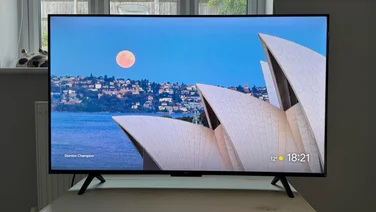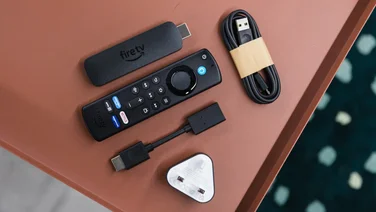TVs & Home Cinema

CES 2026: The LG Wallpaper TV is a stunning remodelling of the G6 OLED, and I want one
The new pencil-thin LG Wallpaper TV had me captivated at CES, and won’t cost that much more than the G6 OLED, according to LG sources
-
 CES 2026: Samsung unveils S95H and R95H flagship QD-OLED and Micro RGB televisions The Samsung S95H QD-OLED is brighter and more wall-mount-friendly than before, while the brand’s Micro RGB option will be available in a much wider range of sizes
CES 2026: Samsung unveils S95H and R95H flagship QD-OLED and Micro RGB televisions The Samsung S95H QD-OLED is brighter and more wall-mount-friendly than before, while the brand’s Micro RGB option will be available in a much wider range of sizes -
 The best TVs to buy in 2025 Not sure which TV is right for you? We’ve tested all of the top sets to help you pick the best TV for any budget and any room
The best TVs to buy in 2025 Not sure which TV is right for you? We’ve tested all of the top sets to help you pick the best TV for any budget and any room -
 CES 2026: Hisense doubles down on colour with new RGB Mini LED Evo and Micro LED TVs Our Tech Editor was in Las Vegas to see Hisense unveil new panel tech that looks set to break TV colour boundaries
CES 2026: Hisense doubles down on colour with new RGB Mini LED Evo and Micro LED TVs Our Tech Editor was in Las Vegas to see Hisense unveil new panel tech that looks set to break TV colour boundaries -
 Build a home cinema on a budget with Sharp’s Roku TV and Dolby Atmos soundbar Sharp’s HJ Series Roku TV and Dolby Atmos soundbar let you enjoy big movie thrills on a budget
Build a home cinema on a budget with Sharp’s Roku TV and Dolby Atmos soundbar Sharp’s HJ Series Roku TV and Dolby Atmos soundbar let you enjoy big movie thrills on a budget -
best buy
 Philips OLED760 review: The best-value OLED on the market? It may lack the brightness of more expensive OLED TVs, but for the price, the Philips OLED760 delivers an incredible viewing experience£899
Philips OLED760 review: The best-value OLED on the market? It may lack the brightness of more expensive OLED TVs, but for the price, the Philips OLED760 delivers an incredible viewing experience£899 -
recommended
 TCL P7K review: Even a stripped-back TCL TV still delivers While the TCL P7K is relatively basic by the brand’s TV standards this year, it still delivers excellent value for money£269
TCL P7K review: Even a stripped-back TCL TV still delivers While the TCL P7K is relatively basic by the brand’s TV standards this year, it still delivers excellent value for money£269 -
 The best budget soundbars from just £75 The best budget soundbars we’ve tested will improve your home audio setup without breaking the bank
The best budget soundbars from just £75 The best budget soundbars we’ve tested will improve your home audio setup without breaking the bank -
 Best Fire TV Stick 2025: Every Amazon media streamer tested Amazon sells a range of Fire TV sticks and devices for streaming, and we’ve tested them all
Best Fire TV Stick 2025: Every Amazon media streamer tested Amazon sells a range of Fire TV sticks and devices for streaming, and we’ve tested them all -
 The best soundbars for boosting your TV’s audio Upgrade your television’s sound with the best soundbars we've tested
The best soundbars for boosting your TV’s audio Upgrade your television’s sound with the best soundbars we've tested -
 The best projectors to buy in 2025 Looking for the ultimate big-screen thrills? We’ve picked out the best 1080p and 4K projectors, tried and tested by us
The best projectors to buy in 2025 Looking for the ultimate big-screen thrills? We’ve picked out the best 1080p and 4K projectors, tried and tested by us


